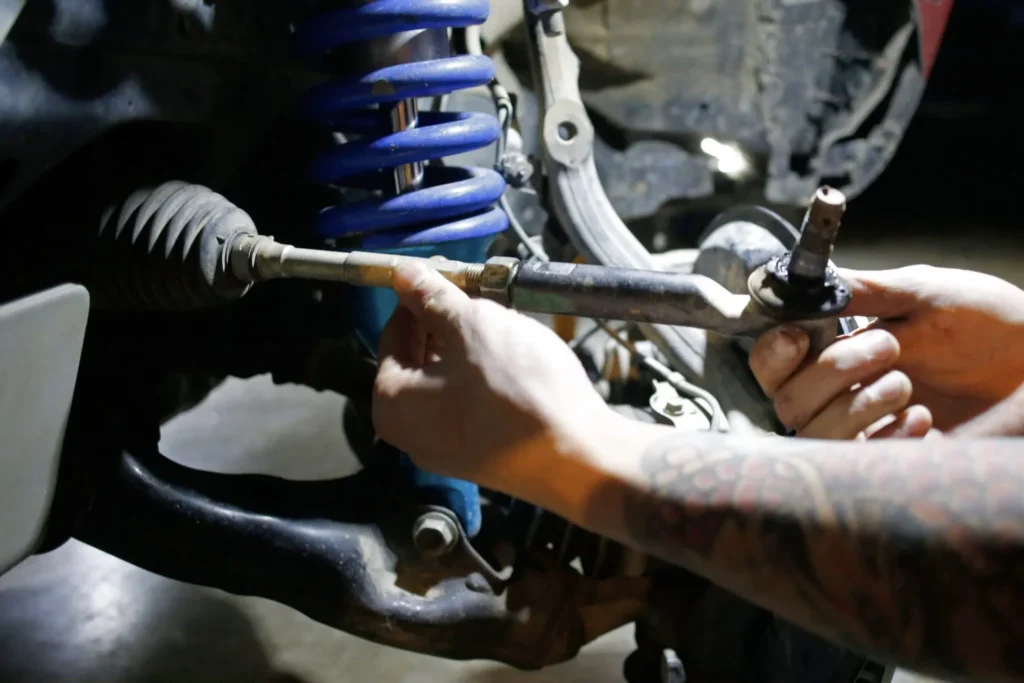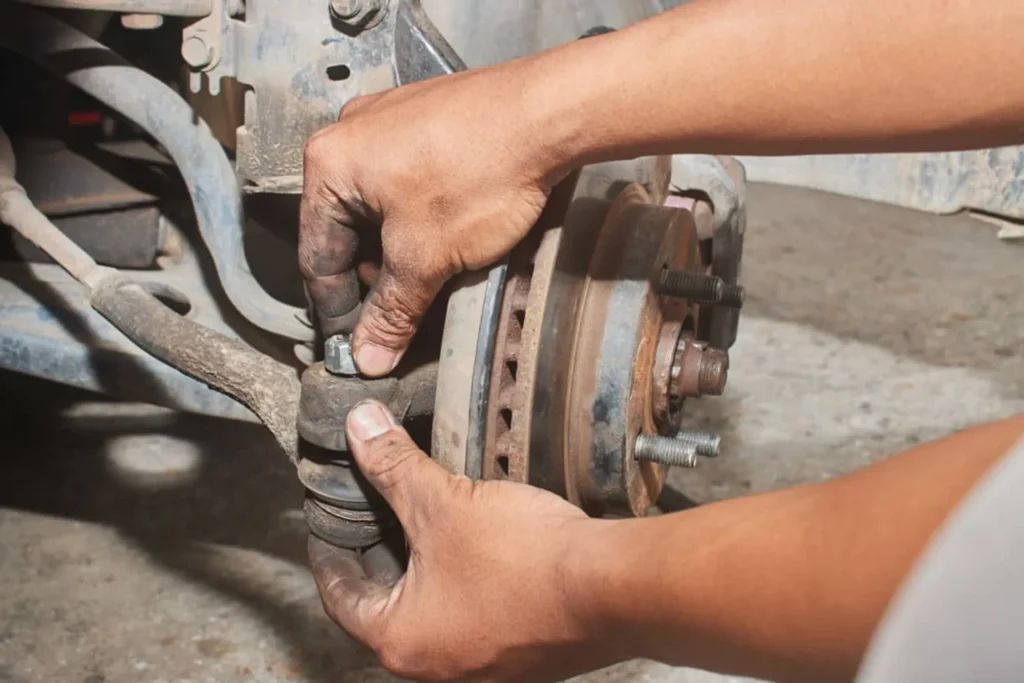A tie rod is an essential component in a car’s steering system. It plays a crucial role in connecting the steering mechanism to the wheels, allowing the vehicle to turn smoothly and accurately. Without a properly functioning tie rod, the steering system would fail, making it unsafe to drive. This guide will cover everything about tie rods, their functions, types, symptoms of failure, maintenance tips, and more to ensure you have a clear understanding of this vital part of your vehicle.
Functions of a Tie Rod in a Car
The tie rod is responsible for transferring the steering force from the steering gear or rack to the wheels. It ensures the wheels move in the direction you turn the steering wheel. Below are its primary functions:
- Steering Alignment: Maintains the alignment of the wheels to ensure smooth and controlled turns.
- Force Transmission: Transfers force from the steering mechanism to the wheels.
- Stability: Contributes to overall vehicle stability by keeping the wheels aligned.
- Minimized Tire Wear: Ensures even wear on tires by maintaining proper alignment.
Types of Tie Rods
Tie rods are classified into two main types based on their design and function:
| Type | Description |
|---|---|
| Inner Tie Rod | Located inside the steering mechanism, connected to the rack-and-pinion system. Transfers force inward. |
| Outer Tie Rod | Positioned near the wheels, connected to the steering knuckle. Helps the wheels pivot and turn. |
Symptoms of a Failing Tie Rod

A failing tie rod can lead to unsafe driving conditions. Recognizing these symptoms early can help you address the problem promptly:
- Uneven Tire Wear: If you notice one tire wearing out faster than the others, it could indicate a tie rod issue.
- Vibrations in Steering Wheel: A damaged tie rod may cause the steering wheel to shake, especially during turns.
- Poor Steering Response: Difficulty in steering or delayed response can be a sign of a worn-out tie rod.
- Clunking Noises: Hearing unusual noises, especially when turning, may indicate a loose or damaged tie rod.
- Misaligned Wheels: If your car pulls to one side, the tie rod might be out of alignment.
How to Inspect and Maintain Tie Rods

Regular inspection and maintenance of your car’s tie rods can prevent potential steering issues and costly repairs. Follow these steps:
- Visual Inspection: Look for cracks, bends, or visible damage to the tie rod.
- Check Alignment: If the car drifts to one side, have the alignment checked.
- Listen for Noises: Pay attention to clunking or rattling sounds from the front suspension.
- Lubrication: Keep the tie rod joints well-lubricated to minimize wear and tear.
- Professional Inspection: Have your vehicle inspected by a mechanic during regular maintenance to identify any potential issues.
Replacing a Tie Rod: When and How?
Tie rods should be replaced if they show signs of wear or damage. Driving with a damaged tie rod can lead to severe steering issues and safety hazards.
Steps to Replace a Tie Rod
- Lift the Vehicle: Use a jack to lift the car and secure it on stands.
- Remove the Wheel: Take off the wheel to access the tie rod.
- Disconnect the Tie Rod: Detach the tie rod from the steering knuckle and inner tie rod.
- Install the New Tie Rod: Attach the new tie rod and tighten it securely.
- Alignment Check: After replacing, ensure the wheels are properly aligned.
Common Myths About Tie Rods
- “Tie Rods Only Affect Steering”: False. They also impact tire wear and vehicle stability.
- “They Don’t Require Maintenance”: Incorrect. Regular lubrication and inspections are essential.
- “You Can Ignore Minor Issues”: Misleading. Small problems can lead to major failures if neglected.
FAQs About Tie Rods
Q1: How Long Do Tie Rods Last?
Tie rods typically last between 50,000 to 100,000 miles, depending on driving conditions and maintenance practices.
Q2: Can I Drive with a Bad Tie Rod?
It is unsafe to drive with a failing tie rod as it can lead to loss of steering control.
Q3: How Much Does It Cost to Replace a Tie Rod?
The cost varies but generally ranges from $100 to $250, including parts and labor.
Q4: Do I Need to Align My Wheels After Replacing a Tie Rod?
Yes, wheel alignment is necessary after replacing a tie rod to ensure proper handling and tire wear.
Q5: What Causes Tie Rod Failure?
Tie rod failure can result from wear and tear, lack of lubrication, or impact from potholes or accidents.





